Magnetic Resonance Imaging (MRI) Technologist
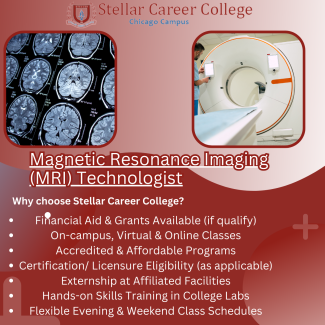
Discover the responsibilities, qualifications, and career prospects of a Magnetic Resonance Imaging (MRI) Technologist.
The field of medical imaging plays a crucial role in diagnosing and treating various health conditions. Among the different imaging techniques available, Magnetic Resonance Imaging (MRI) is widely recognized for its ability to produce detailed images of the body’s internal structures. Behind the scenes, there is a skilled professional known as an MRI Technologist, who operates the equipment and ensures accurate results. If you’re curious about this rewarding career path, this comprehensive guide will provide you with valuable insights into the role of an MRI Technologist.
| 1. Education and Training Requirements |
| 2. Licensing and Certification |
| 3. Job Responsibilities |
| 4. MRI Imaging Techniques |
| 5. Safety Precautions and Protocols |
| 6. Interpreting MRI Results |
| 7. Working Environment and Schedule |
| 8. Career Outlook and Advancement Opportunities |
| 9. Salary Expectations |
| 10. Continuing Education and Professional Development |
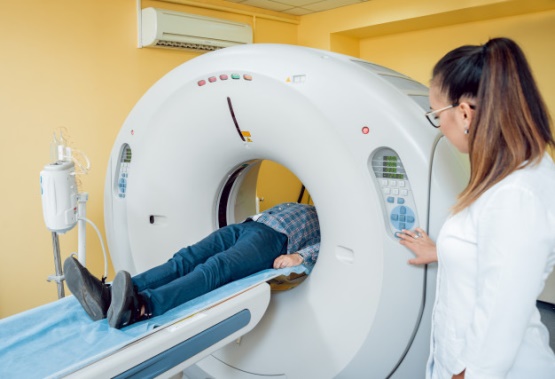
Education and Training Requirements
MRI Technologists play a crucial role in the healthcare system by operating MRI scanners and capturing high-quality images for diagnostic purposes. To embark on this career path, individuals must meet specific educational and training requirements. MRI Technologists typically hold an associate’s or bachelor’s degree in radiologic technology or a related field. These programs provide a solid foundation in anatomy, physiology, patient care, and imaging techniques.
In addition to formal education, aspiring MRI Technologists must also complete clinical training. This hands-on experience takes place in a healthcare facility under the guidance of experienced professionals. During this training, students learn how to operate MRI scanners, position patients correctly, and ensure image quality. Clinical training is a vital component of an MRI Technologist’s education, as it allows them to apply theoretical knowledge in a real-world setting.
Licensing and Certification
In the United States, MRI Technologists are required to obtain licensure or certification, depending on the state regulations. Licensing requirements may vary, but most states require individuals to pass the American Registry of Radiologic Technologists (ARRT) certification examination. The ARRT certification ensures that MRI Technologists possess the necessary knowledge and skills to perform their duties effectively and safely.
Apart from ARRT certification, there are additional certifications available for MRI Technologists who wish to demonstrate their expertise in specific areas. For example, the American Registry of Magnetic Resonance Imaging Technologists (ARMRIT) offers certification programs focused solely on MRI. These additional certifications can enhance job prospects and open doors to advanced career opportunities.
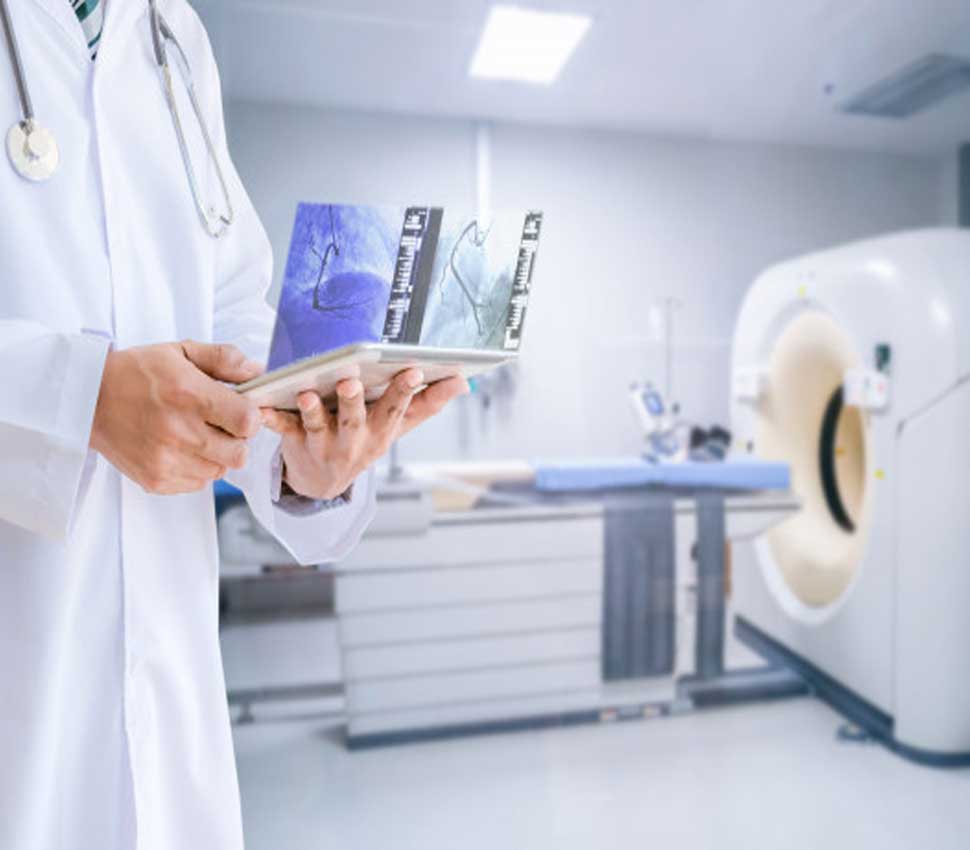
Job Responsibilities
As an MRI Technologist, your primary responsibility is to operate MRI scanners and capture high-quality images of the body’s internal structures. However, your role extends beyond simply pushing buttons. Before a patient undergoes an MRI scan, you will explain the procedure, address any concerns, and ensure their comfort. During the scan, you will carefully position the patient and operate the equipment to obtain accurate images.
Moreover, MRI Technologists must pay close attention to safety protocols. Magnetic fields and radio waves are involved in MRI, and it’s essential to minimize potential risks for both the patient and yourself. You will screen patients for contraindications, such as pacemakers or metallic implants, and take appropriate safety measures.
MRI Imaging Techniques
MRI Technologists utilize various imaging techniques to visualize different parts of the body and detect abnormalities. Some common MRI imaging techniques include:
- T1-Weighted Imaging: This technique provides detailed anatomical information and is often used to evaluate the brain, spine, and musculoskeletal system.
- T2-Weighted Imaging: T2-weighted images highlight fluid and are useful in assessing soft tissues, organs, and infections.
- Magnetic Resonance Angiography (MRA): MRA is used to examine blood vessels and identify conditions such as aneurysms or blockages.
- Diffusion-Weighted Imaging (DWI): DWI helps evaluate tissue cellularity and is valuable in diagnosing strokes and certain tumors.
Each imaging technique serves a specific purpose and requires precise parameter settings and image acquisition protocols. MRI Technologists must have a deep understanding of these techniques to ensure accurate and informative images.
Safety Precautions and Protocols
The safety of patients and MRI Technologists is of utmost importance in any MRI facility. Since MRI involves strong magnetic fields, proper safety precautions must be followed to prevent accidents and ensure the well-being of everyone involved. Some essential safety protocols include:
- Screening patients for contraindications, such as metallic implants or claustrophobia.
- Maintaining a safe environment free from ferromagnetic objects.
- Educating patients about the procedure and reassuring them about safety measures.
- Using appropriate shielding and protective equipment.
MRI Technologists are responsible for adhering to these safety protocols and ensuring a secure environment for patients and staff.
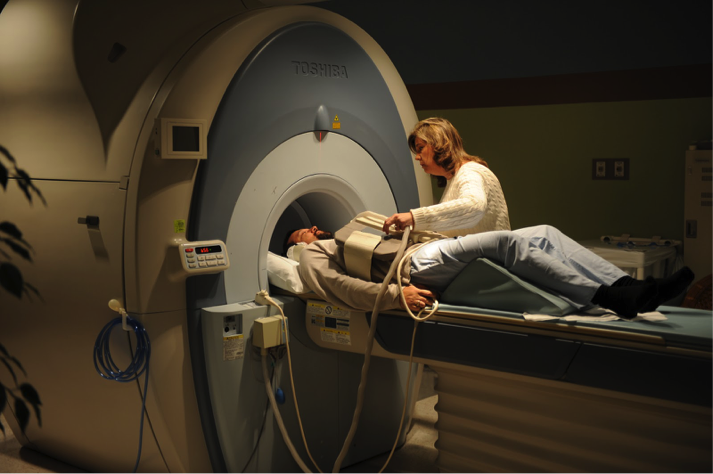
Interpreting MRI Results
While MRI Technologists operate the equipment and capture images, they do not typically interpret the results. The obtained images are usually reviewed and analyzed by radiologists or other healthcare professionals trained in radiology. These experts interpret the images, identify abnormalities or conditions, and provide diagnostic reports to guide patient treatment.
However, MRI Technologists should possess a basic understanding of anatomy and pathology to recognize potential issues during the imaging process. Being familiar with normal and abnormal structures allows them to adjust imaging parameters and capture additional images if necessary.
Working Environment and Schedule
MRI Technologists work in a variety of healthcare settings, including hospitals, diagnostic imaging centers, and outpatient clinics. These environments provide opportunities to collaborate with other healthcare professionals and contribute to patient care. The work schedule can vary, with some facilities offering round-the-clock services, while others follow traditional business hours. Weekend and on-call shifts may also be required in certain settings.
MRI Technologists often spend a significant amount of time on their feet and may need to assist patients with mobility issues. Additionally, they must adhere to infection control measures and maintain a clean and sterile imaging environment.
Career Outlook and Advancement Opportunities
The demand for MRI Technologists continues to grow as the importance of medical imaging in healthcare diagnosis and treatment becomes increasingly recognized. The aging population and advancements in imaging technology contribute to this demand. According to the U.S. Bureau of Labor Statistics, the employment of MRI Technologists is projected to grow by 9% from 2020 to 2030, faster than the average for all occupations.
As MRI Technologists gain experience and expertise, they may explore various career advancement opportunities. These include specializing in specific areas of MRI, pursuing leadership roles, or becoming educators or researchers in the field. Continued education and professional development can open doors to higher-paying positions and increased responsibilities.
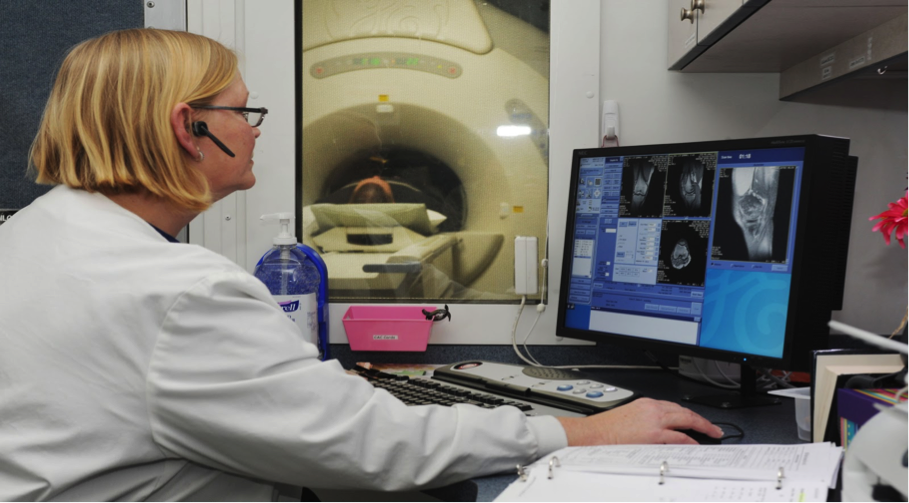
Salary Expectations
The salary of an MRI Technologist can vary based on factors such as location, experience, education, and the employing facility. According to the U.S. Bureau of Labor Statistics, the median annual wage for MRI Technologists was $73,410 as of May 2020. However, salaries can range from around $52,000 to over $100,000, depending on the factors mentioned earlier.
It’s important to note that salaries may differ in different countries or regions, so it’s advisable to research the specific salary expectations in your desired location.
Continuing Education and Professional Development
To stay current with the latest advancements in MRI technology and maintain licensure or certifications, MRI Technologists must engage in continuing education and professional development. This may involve attending conferences, workshops, or webinars related to medical imaging and MRI. Additionally, pursuing advanced certifications or higher degrees can enhance career prospects and expand knowledge in specialized areas.
MRI Technologists should actively seek opportunities to enhance their skills and stay updated with evolving techniques, protocols, and safety measures in the field of MRI.

FAQs
- What is the difference between an MRI Technologist and a radiologic technologist?
- While both professions involve medical imaging, MRI Technologists specialize in magnetic resonance imaging, whereas radiologic technologists work with various imaging techniques such as X-rays and CT scans.
- How long does it take to become an MRI Technologist?
- The time required to become an MRI Technologist can vary. Typically, it takes around two to four years to complete an educational program and fulfill clinical training requirements.
- Are there any specific physical requirements for MRI Technologists?
- MRI Technologists should be able to stand for long periods, assist patients with positioning, and lift/move equipment. Good physical stamina and dexterity are advantageous in this profession.
- Can MRI Technologists work in research or academia?
- Yes, MRI Technologists can pursue careers in research or academia. They can contribute to studies and advancements in the field of MRI technology or educate future MRI Technologists.
- Are there opportunities for career advancement in this field?
- Yes, MRI Technologists can advance in their careers by specializing in specific areas of MRI, pursuing leadership roles, or exploring educational and research opportunities.
- How often should MRI Technologists update their certifications?
- Certification renewal requirements vary, but typically, MRI Technologists need to renew their certifications every two to three years by completing continuing education credits or retaking the certification exam.
- Can MRI Technologists specialize in a specific area of MRI?
- Yes, MRI Technologists can specialize in areas such as neuroimaging, musculoskeletal imaging, cardiovascular imaging, or breast imaging, among others.
- Are there any risks associated with working with MRI equipment?
- MRI Technologists must follow strict safety protocols to minimize risks associated with magnetic fields and ensure the safety of patients and themselves. Proper training and adherence to safety guidelines mitigate potential risks.
- What are the essential skills for an MRI Technologist?
- Strong technical skills, attention to detail, effective communication, patient care, and the ability to work in a team are crucial for MRI Technologists.
- Can MRI Technologists interact directly with patients?
- Yes, MRI Technologists play a crucial role in patient care. They explain procedures, address concerns, ensure patient comfort, and provide necessary support during the imaging process.
- What is an MRI technologist? An MRI technologist is a healthcare professional trained to operate magnetic resonance imaging (MRI) machines and capture detailed images of the internal structures of the human body.
- What does an MRI technologist do? An MRI technologist is responsible for preparing patients for MRI scans, explaining the procedure, positioning patients correctly, operating the MRI machine, and ensuring high-quality images are obtained. They may also assist in the administration of contrast agents when necessary.
- How does an MRI machine work? An MRI machine uses a powerful magnetic field and radio waves to generate detailed images of the body’s internal structures. The machine captures signals emitted by the body’s tissues in response to the magnetic field and converts them into high-resolution images.
- What are the educational requirements to become an MRI technologist? Typically, becoming an MRI technologist requires completing a postsecondary certificate or an associate degree program in MRI technology. These programs usually include coursework in anatomy, physiology, patient care, and MRI procedures. Some states also require licensure or certification.
- Are there any certifications required to work as an MRI technologist? Yes, many employers prefer or require MRI technologists to hold certification. The American Registry of Radiologic Technologists (ARRT) offers certification in MRI technology. Other organizations, such as the American Registry of Magnetic Resonance Imaging Technologists (ARMRIT), also provide certification options.
- What skills are essential for an MRI technologist? Key skills for an MRI technologist include strong knowledge of anatomy and physiology, proficiency in operating MRI equipment, the ability to communicate effectively with patients, attention to detail, problem-solving skills, and the ability to work in a fast-paced environment.
- Is there a high demand for MRI technologists? Yes, the demand for MRI technologists is expected to grow due to advancements in medical imaging technology and an aging population requiring more diagnostic imaging services. This field offers good job prospects and potential for career growth.
- What are the typical work settings for MRI technologists? MRI technologists can work in various healthcare settings, including hospitals, imaging centers, outpatient clinics, and research facilities. They may also have opportunities to work in mobile imaging units or travel to different locations as needed.
- Are there any safety concerns associated with working as an MRI technologist? Yes, MRI technologists must adhere to strict safety protocols due to the strong magnetic fields produced by the MRI machines. They need to ensure the safety of patients, themselves, and others in the vicinity. Proper screening for metal objects and implants is crucial, and following established safety guidelines is of utmost importance.
- Can MRI technologists advance in their careers? Yes, MRI technologists can advance their careers through experience, continuing education, and specialization. They can pursue advanced certifications, such as in cardiac or neuro MRI, or explore opportunities for management or teaching roles within the field.
Please note that specific requirements and regulations may vary based on your location and the organization you work for.
- Yes, MRI Technologists play a crucial role in patient care. They explain procedures, address concerns, ensure patient comfort, and provide necessary support during the imaging process.

MRI Technologists are integral members of the healthcare team, collaborating with radiologists, physicians, and other medical professionals to provide accurate diagnoses and guide appropriate treatment plans. Their expertise in operating MRI scanners and capturing high-quality images plays a crucial role in identifying and understanding various medical conditions.
One of the key advantages of MRI imaging is its ability to produce detailed images of soft tissues, organs, and structures within the body. This makes MRI particularly useful in diagnosing conditions that may not be easily detected by other imaging modalities. MRI Technologists employ specialized imaging techniques and protocols to optimize image quality, ensuring that radiologists have the necessary information to make accurate assessments.
In addition to technical skills, MRI Technologists possess exceptional interpersonal and communication skills. They work closely with patients, putting them at ease and addressing any concerns they may have about the procedure. Clear and effective communication is essential in obtaining patient cooperation during the scan, as patient movement or discomfort can compromise image quality. MRI Technologists excel in creating a supportive and reassuring environment for patients, ensuring their comfort and cooperation throughout the imaging process.
Moreover, MRI Technologists are trained to prioritize patient safety. They meticulously follow safety protocols to minimize any potential risks associated with the strong magnetic fields utilized in MRI. By thoroughly screening patients for contraindications, such as metal implants or pacemakers, MRI Technologists ensure the safety of both the patient and themselves. Their expertise in identifying and mitigating potential hazards is crucial in maintaining a safe environment within the MRI facility.
The field of MRI technology continues to evolve rapidly, with advancements in equipment, imaging techniques, and research. MRI Technologists must stay abreast of these developments through continuing education and professional development opportunities. By expanding their knowledge and skills, they can adapt to emerging technologies and provide the highest quality of patient care. This commitment to ongoing learning is a testament to the dedication and professionalism of MRI Technologists.
As the demand for medical imaging services continues to rise, so does the need for skilled MRI Technologists. The aging population, coupled with advancements in healthcare, drives the need for accurate and timely diagnoses. MRI Technologists play a vital role in meeting this demand by ensuring the efficient operation of MRI scanners and maintaining the highest standards of patient care.
In conclusion, MRI Technologists are indispensable members of the healthcare team, contributing to the accurate diagnosis and treatment of various medical conditions. Their technical expertise, commitment to patient safety, and compassionate approach make them invaluable assets in the field of medical imaging. As the field continues to advance, MRI Technologists will continue to play a crucial role in providing high-quality patient care and improving healthcare outcomes.
Conclusion:
Becoming an MRI Technologist offers an exciting and rewarding career path for individuals passionate about medical imaging and patient care. With the growing demand for diagnostic imaging services, the role of MRI Technologists becomes increasingly vital in providing accurate and detailed images for medical diagnoses. By meeting the educational requirements, obtaining licensure or certification, and continuously updating their skills, MRI Technologists can contribute to the healthcare industry while enjoying professional growth and job stability.
Remember, behind every clear and precise MRI image lies the expertise of an MRI Technologist. Their dedication and skill ensure that healthcare professionals have the necessary information to diagnose and treat patients effectively, ultimately improving lives and well-being.

